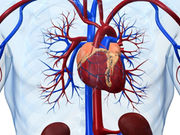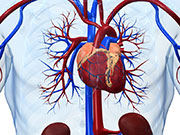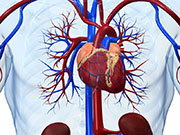Tag: Aneurysm
Lipid-Linked Genetic Risk Tied to Abdominal Aortic Aneurysm
Genetic elevation of LDL-C linked to increased AAA risk; increase for HDL-C linked to lower risk of AAA
No Treatment or Imaging Follow-Up Most Effective for Tiny UIAs
Highest health benefit for unruptured intracranial aneurysms with no treatment or preventive follow-up
Being Awake for Aneurysm Brain Surgery May Offer Better Results
In new approach to the dangerous lesions, surgeons can get patient feedback during the procedure
CT Colonography May Be Useful for Aneurysm Detection
Computed tomography colonography diagnoses nearly one in five small aneurysm patients
AAA Progression Tied to Higher Plasma D-Dimer Concentration
Patients with sub-aneurysmal aortic dilatation have higher plasma D-dimer than controls
Active Asthma Ups Risk of Abdominal Aortic Aneurysm
Risk of abdominal aortic aneurysm rupture also increased
Two-Thirds of Acute AAA Occur in Those Aged 75 Years and Older
Overall, 96.4 percent of events in men aged younger than 75 years occur in ever smokers
Pre-Op Variable Calculator Accurately Predicts AAA Survival
Survival similar for external calculator, Kaplan-Meier estimate after abdominal aortic aneurysm repair












